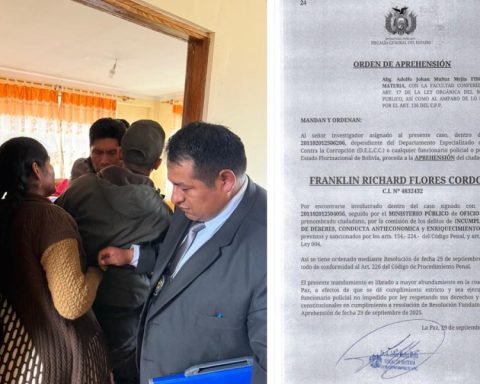Microplastics have been found in remote places on the planet, such as the Arctic Circle or Mount Everest, but also in the stomach of sharks or penguins and in human feces and placenta. Now a study shows for the first time that they can also be found in the bloodstream of people.
Those responsible for this work are the researchers Heather Leslie and Marja Lamoree, from the Free University of Amsterdam (Vrije Universiteit), who find that tiny pieces of plastic from our living environment can be absorbed into the human bloodstream.
The results are part of the Immunoplast project and are published in the scientific journal Environment International.
New analytical method: measurable quantities in the blood
To reach their conclusions, the research team developed an analytical method to establish the trace level of micro and nanoplastic particles in human blood.
The method was applied to the blood of 22 anonymous donors and examined for the presence of five different polymers, the building blocks of plastic. The degree of presence of each of the polymers in the blood was also determined.
According to the analysis, three quarters of the subjects analyzed seemed to have plastics in their blood, the university said in a statement: this research, it says, is the first to show that plastic particles can end up in the human bloodstream.
Previous indicators of this came from laboratory experiments, but current research shows that people absorb microplastics from their environment in their daily lives and that the amounts are measurable in their blood.
The overall concentration of plastic particles in the blood of the 22 donors amounted to an average of 1.6 micrograms per milliliter, which is comparable to a plastic teaspoon in 1,000 liters of water (ten large bathtubs).
A quarter of the donors tested had no detectable amounts of plastic particles of any kind.
The most common plastics
Polyethylene terephthalate (PET), polyethylene, and styrene polymers were the most common types of plastic found in blood samples, followed by polymethyl methacrylate; Polypropylene was also tested, but the concentrations were too low for accurate measurement.
The next step is to understand the possible ease with which these particles pass from the bloodstream to tissues, for example, in organs such as the brain.
Heather Leslie details that “we have now shown that our bloodstream, our river of life so to speak, has plastic.”
Marja Lamoree adds: This dataset is the first of its kind and needs to be expanded to understand the extent of plastic pollution in the human body, and how damaging it can be.
“With this knowledge we will be able to determine if exposure to plastic particles poses a threat to public health,” he adds.
Learn more about possible harmful effects
This research has been funded by the international NGO Common Seas and the ZonMw Microplastics and Health program.
With this program, ZonMw aims to better understand the possible effects of plastic particles on health and what can be done to limit the possible harmful effects. The 15 short-term projects in this program have now been completed.
Nevertheless, it has been shown that knowledge is still lacking and further research is needed to determine health risks.
In the Netherlands, this follow-up research is carried out by the MOMENTUM consortium, in which the Vrije in Amsterdam participates.
In the European context, research projects studying exposure to microplastics and their harmful effects are also underway.
Last January, a group of Italian scientists found microplastics in the human placenta and they continue to investigate the effect of this finding on the body; the results were also published in Environment International.
Microplastics have been found in remote places on the planet, such as the Arctic Circle or Mount Everest, but also in the stomach of sharks or penguins and in human feces and placenta. Now a study shows for the first time that they can also be found in the bloodstream of people.
Those responsible for this work are the researchers Heather Leslie and Marja Lamoree, from the Free University of Amsterdam (Vrije Universiteit), who find that tiny pieces of plastic from our living environment can be absorbed into the human bloodstream.
The results are part of the Immunoplast project and are published in the scientific journal Environment International.
New analytical method: measurable quantities in the blood
To reach their conclusions, the research team developed an analytical method to establish the trace level of micro and nanoplastic particles in human blood.
The method was applied to the blood of 22 anonymous donors and examined for the presence of five different polymers, the building blocks of plastic. The degree of presence of each of the polymers in the blood was also determined.
According to the analysis, three quarters of the subjects analyzed seemed to have plastics in their blood, the university said in a statement: this research, it says, is the first to show that plastic particles can end up in the human bloodstream.
Previous indicators of this came from laboratory experiments, but current research shows that people absorb microplastics from their environment in their daily lives and that the amounts are measurable in their blood.
The overall concentration of plastic particles in the blood of the 22 donors amounted to an average of 1.6 micrograms per milliliter, which is comparable to a plastic teaspoon in 1,000 liters of water (ten large bathtubs).
A quarter of the donors tested had no detectable amounts of plastic particles of any kind.
The most common plastics
Polyethylene terephthalate (PET), polyethylene, and styrene polymers were the most common types of plastic found in blood samples, followed by polymethyl methacrylate; Polypropylene was also tested, but the concentrations were too low for accurate measurement.
The next step is to understand the possible ease with which these particles pass from the bloodstream to tissues, for example, in organs such as the brain.
Heather Leslie details that “we have now shown that our bloodstream, our river of life so to speak, has plastic.”
Marja Lamoree adds: This dataset is the first of its kind and needs to be expanded to understand the extent of plastic pollution in the human body, and how damaging it can be.
“With this knowledge we will be able to determine if exposure to plastic particles poses a threat to public health,” he adds.
Learn more about possible harmful effects
This research has been funded by the international NGO Common Seas and the ZonMw Microplastics and Health program.
With this program, ZonMw aims to better understand the possible effects of plastic particles on health and what can be done to limit the possible harmful effects. The 15 short-term projects in this program have now been completed.
Nevertheless, it has been shown that knowledge is still lacking and further research is needed to determine health risks.
In the Netherlands, this follow-up research is carried out by the MOMENTUM consortium, in which the Vrije in Amsterdam participates.
In the European context, research projects studying exposure to microplastics and their harmful effects are also underway.
Last January, a group of Italian scientists found microplastics in the human placenta and they continue to investigate the effect of this finding on the body; the results were also published in Environment International.
;


















